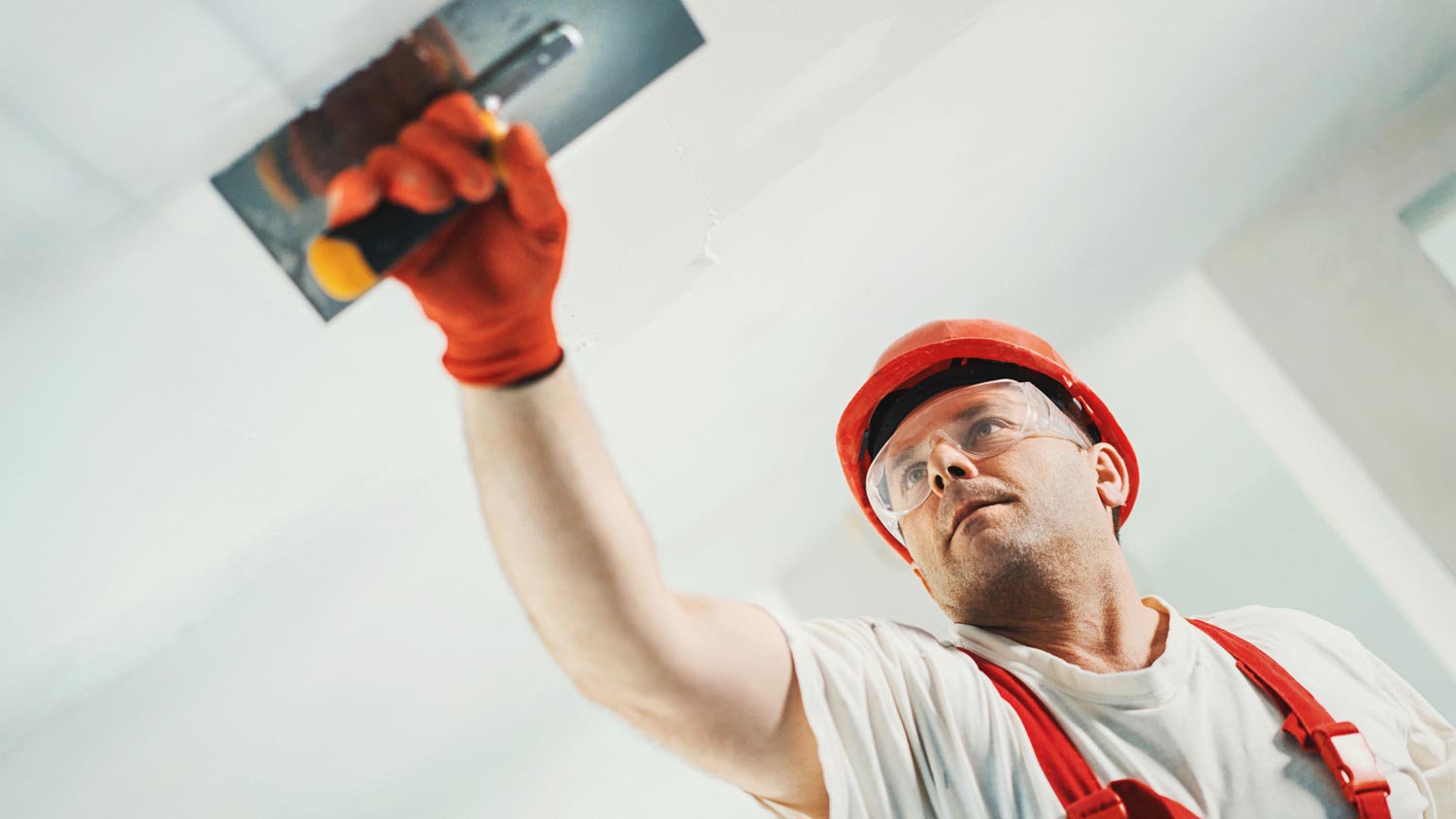How to Drywall an Arch in 5 Steps
Put the finishing touch on an entryway with a smooth curve


- Ladder
- Screwgun
- Putty knife
- Drywall knife
- Drywall saw
- Drywall mud
- Drywall tape
- Drywall bead edge
- Screws
- Razor blades
If you’re handy with carpentry tools and have built yourself an arched entry or doorway, you might also want to tackle the finishing work to make it all come together. Drywalling an arch is one of the more challenging home improvement projects to master if you’re new to handling drywall, tape, and plaster mud, but with a bit of patience and careful application, you’ll be able to get it right. If you’re ready to reap big rewards, here’s how to get started with a drywall arch.
5 Steps to Drywall an Arch
Install Vertical Pieces of Drywall
The easiest part of installing a curved drywall arch is the first step. Simply screw on a piece of fresh drywall over each side of the arch frame and cover it up temporarily. Then, using a drywall saw, cut it back to the curve to expose the arch again.
Bend and Shape the Drywall
Now that you’ve covered the sides of the arch, you’ll need to work on the center, curved section. Cut a piece of 1/2-inch-thick drywall to width and, working from one side, start flexing the material carefully. Install screws as you go to keep the shape. It’s easy to break the drywall in this step, so work carefully lest you find yourself repairing drywall damage in the process. If you snap the drywall, start over with a fresh piece.
Learning how to bend drywall around an arched frame is a challenge that requires craftsmanship, so be patient and plan on wasting a few sheets as you practice getting the measurements right.
Tape the Seams
 Photo: visivasnc / Adobe Stock
Photo: visivasnc / Adobe StockUsing drywall tape, cover up the transitional cracks and seams where the three pieces of drywall meet. Then, cover up the archway edges with the bead edging, which is specifically made to create a smooth edge for projects like these. This step will ensure that you have a clean curve to work with once you start mudding.
Drywall Mud the Seams and Screw Holes
Thin your mud according to the manufacturer’s specifications with the mud bucket and mixing rod. Working in sections, float the mud with a drywall knife over the seams and holes for the first skim coat, then let dry.
Sand between coats, knocking down the rough edges you create when mudding, and try to get as close to the arch curve you’re trying to replicate as possible. Repeat this step until you have a clean curve. Then, slowly build thin layers of drywall mud onto the curves and flats while honing in the edges closer to perfection with each pass. You’ll likely need at least five passes to get it right.
Paint the Walls and Arch
 Photo: primipil / Adobe Stock
Photo: primipil / Adobe StockNow that you’ve got the drywall sanded and prepared for painting, it’s time to prime the raw drywall and cured mud with a good quality primer. For the topcoat, choose the right sheen that is either a flat or matte finish to make the edges disappear and blend it in with the surrounding wall surfaces.
DIY Drywall Arch vs. Hiring a Pro
Drywalling a curved surface is one of the more challenging projects for the part-time DIYer. The skill level required to float out long, shaped edges with drywall mud and sandpaper can demand a lot of your time and energy. You may want to consider requesting a quote from a professional drywall contractor.















